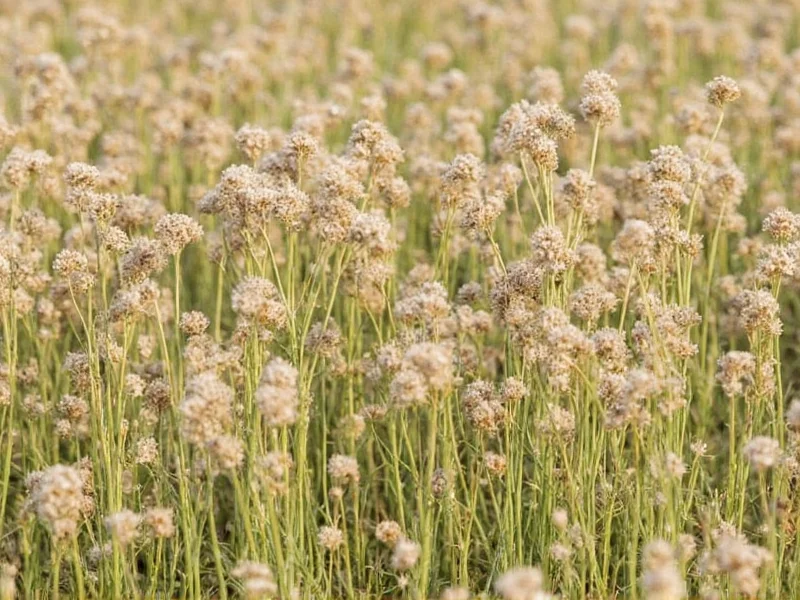Understanding what is caraway begins with recognizing it as one of the oldest cultivated spices, with historical use dating back to ancient Egyptian times. The caraway plant grows to about 20 inches tall and produces small white or pink flowers, but it's the ripe fruit—often mistakenly called seeds—that delivers the characteristic flavor profile valued by chefs and home cooks alike.
Botanical Background and Origins
The Carum carvi plant is native to Europe and Western Asia, thriving in temperate climates with well-drained soil. As a member of the same plant family as parsley, celery, and dill, caraway shares some botanical characteristics with these familiar herbs while maintaining its unique identity. The plant completes its life cycle over two years, producing its valuable fruit during the second growing season.
Physical Characteristics of Caraway Seeds
Caraway seeds measure approximately 3-6 mm in length and feature five distinct ridges running along their curved surface. Their color ranges from light to dark brown, sometimes with a slight olive tint. When crushed, they release essential oils containing carvone and limonene, compounds responsible for caraway's distinctive aroma and flavor profile that sets it apart from similar spices like cumin or fennel.
| Characteristic | Description |
|---|---|
| Scientific Name | Carum carvi |
| Plant Type | Biennial herb |
| Family | Apiaceae (Umbelliferae) |
| Flavor Profile | Warm, slightly sweet, peppery with citrus notes |
| Primary Growing Regions | Europe, Western Asia, North Africa |
Culinary Applications Around the World
When exploring what is caraway seed used for, the answer spans multiple culinary traditions. In German cuisine, caraway features prominently in rye bread, sauerkraut, and potato dishes. Scandinavian cooks incorporate it into aquavit and traditional baked goods. Middle Eastern recipes often use caraway in spice blends like baharat and in meat preparations. The seeds work particularly well with cabbage, apples, cheese, and root vegetables, enhancing savory dishes without overwhelming other flavors.
Professional chefs recommend toasting caraway seeds briefly in a dry pan before use to intensify their flavor. This simple technique unlocks the full aromatic potential of the spice, making it an excellent addition to homemade breads, stews, and roasted vegetable dishes. For those wondering how to use caraway seeds in everyday cooking, starting with just 1/4 to 1/2 teaspoon per recipe provides the perfect balance without dominating other ingredients.
Historical Significance and Traditional Uses
Historical records show caraway's use dating back to the Stone Age, with seeds found in ancient Swiss lake dwellings. Ancient Romans consumed caraway at the end of meals to aid digestion and freshen breath—a practice that continues in some cultures today. During the Middle Ages, caraway gained reputation as a protective charm against theft and infidelity, often carried in pouches or sewn into clothing.
Nutritional Profile and Potential Benefits
While researching what is caraway seed benefits, scientific studies suggest several potential health advantages. Two tablespoons of caraway seeds contain approximately 80 calories, 4 grams of fiber, and notable amounts of iron, magnesium, and calcium. Research indicates caraway may support digestive health, with traditional medicine systems using it to alleviate bloating and gas. Some preliminary studies suggest potential antioxidant and anti-inflammatory properties, though more research is needed to confirm these effects in humans.
Practical Storage and Usage Tips
To maintain freshness, store caraway seeds in an airtight container away from light and heat. Whole seeds retain their flavor for 1-2 years, while ground caraway loses potency within 6 months. For maximum flavor impact, add whole seeds early in the cooking process for slow-cooked dishes, but incorporate ground caraway near the end of preparation for sauces and dressings.
Common Misconceptions Clarified
Many people confuse caraway with cumin due to their similar appearance, but caraway vs cumin reveals distinct differences. Cumin has a hotter, earthier flavor profile, while caraway offers sweeter, more delicate notes. Another frequent question addresses whether caraway relates to the furniture term "caraway"—these are completely unrelated, with the furniture term deriving from a different linguistic origin.
Frequently Asked Questions
What is caraway seed made from?
Caraway seeds are the dried fruit of the Carum carvi plant, a biennial herb in the parsley family. Despite being called "seeds," they're technically the plant's fruit, containing the actual seeds inside their characteristic ridged structure.
Can I substitute caraway seeds in recipes?
While no substitute perfectly replicates caraway's unique flavor, fennel seeds offer the closest alternative with their similar sweet-anise profile. Use about half the amount of fennel seeds when substituting for caraway, as fennel has a stronger licorice flavor. Dill seeds or a combination of cumin and anise seeds can work in some recipes but will produce noticeably different results.
Is caraway the same as caraway thyme?
No, caraway and caraway thyme are different plants. Caraway thyme (Thymus herba-barona) is a variety of thyme that happens to have a scent reminiscent of caraway, but it belongs to a completely different plant family. True caraway comes exclusively from the Carum carvi plant.
Does caraway have any digestive benefits?
Traditional medicine systems have used caraway for centuries to support digestion. Modern research suggests caraway may help reduce bloating and gas due to its antispasmodic properties. The seeds contain compounds that can relax intestinal muscles, potentially easing digestive discomfort. However, consult with a healthcare provider before using caraway for medicinal purposes.
How do I grow caraway at home?
Caraway grows best in cool climates with full sun and well-drained soil. Plant seeds directly in the garden in early spring, as caraway develops a long taproot that doesn't transplant well. The plants require about 18 months to mature and produce seeds. Harvest the seeds when the umbels turn brown and the seeds become hard and dark. One plant typically yields enough seeds for home use, as the seeds remain viable for several years when properly stored.











 浙公网安备
33010002000092号
浙公网安备
33010002000092号 浙B2-20120091-4
浙B2-20120091-4